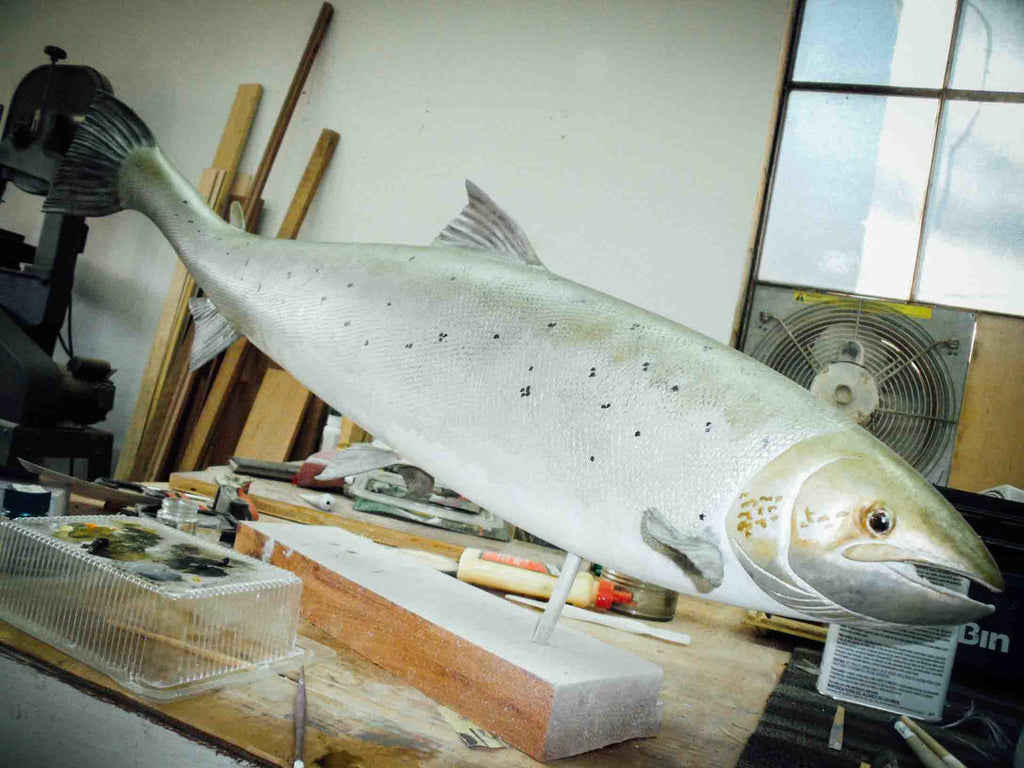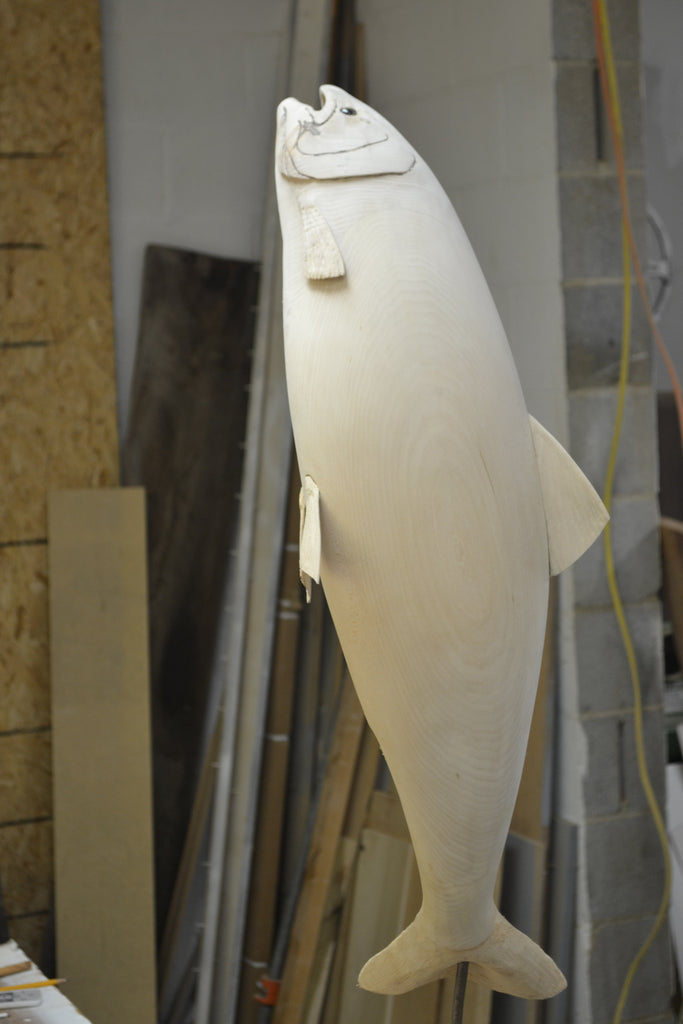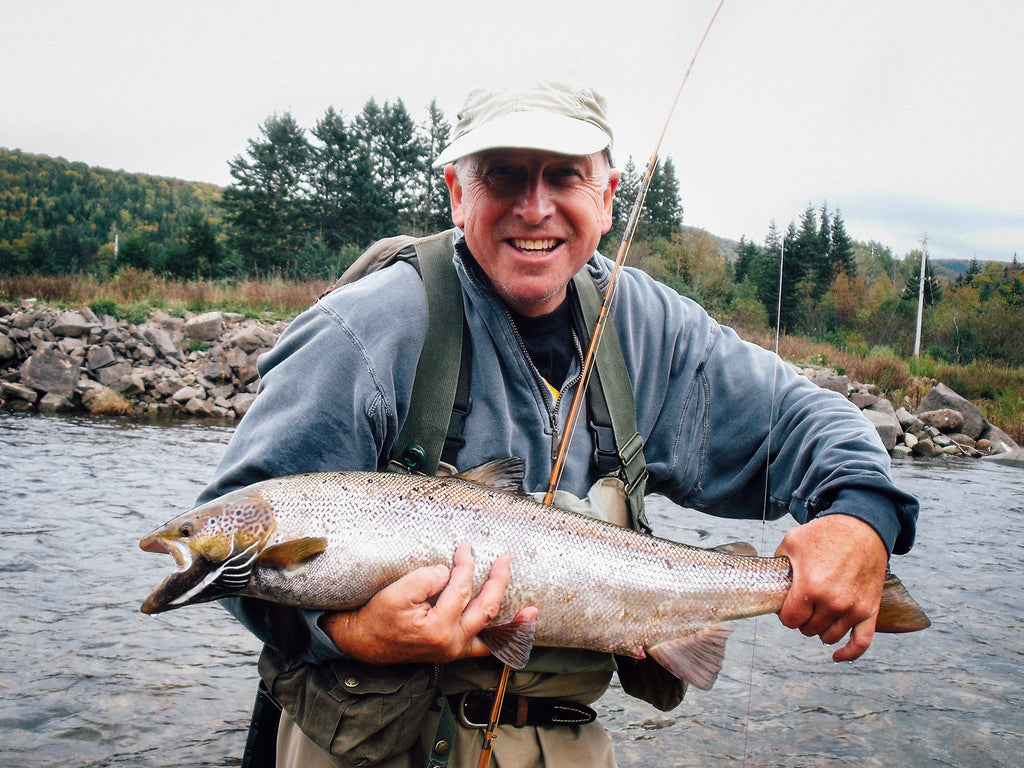Your Cart is Empty
Rods In Stock
Reels In Stock
Resources
Our Rods
One of our longstanding rod models with classic cane color and a slightly more moderate action.
One of our most recognizable rod models with a deep flamed color and crisper action.
These are our limited edition models, only released every few years.
A lot goes into crafting a bamboo fly rod and here you can learn more about our approach.
One of our longstanding rod models with classic cane color and a slightly more moderate action.
One of our most recognizable rod models with a deep flamed color and crisper action.
These are our limited edition models, only released every few years.
A lot goes into crafting a bamboo fly rod and here you can learn more about our approach.
Other Tackle

Meet fish carver Mark Bennett
January 26, 2016 4 min read

We recently had the pleasure of spending a few minutes with old friend Mark Bennett, who has not only been an excellent fishing partner over the years, but who is also a superb woodworker and fish carver. Some years ago we had the privilege of receiving one of Mark's earliest salmon carvings, which still holds pride of place in our dining room as a reminder of some memorable salmon trips. We talked a little bit about his approach to carving and what he hopes to achieve each time he sits down at his workbench.
1) Tell us a little bit about your background - how did you get into carving fish?
I have always been interested in fishing even before I had ever held a fishing rod in my hand, and at the age of 7 years I wrote that I loved to fish. Not sure where that knowledge came from as nobody in my family fished but I’ve always felt it must have been somewhere on the genetic level. I have also enjoyed creating art, whether a furniture piece or tying full dress salmon flies. There is something that just speaks to my inner self when I’m taking the raw material and transforming it into something that can be appreciated for its form and or function.
I had fished in Ontario’s Wood’s bay back in the ‘70’s and most of the cottages had at least one mounted fish on the wall. Usually it was some gigantic Musky or huge Pike and up to that point in my life the biggest fish I had landed was a 1.5 lb smallmouth in the James River in my hometown of Richmond, Va. So the trophy has always been on my mind as I’m sure it is for most people that enjoy the sport. But part of what really started this was my introduction into salmon fishing. Once I hooked and landed salmon up on Cape Breton the moment was such a rush that I needed to be able to hold on to that experience once I returned home. So I got out a block of Bass wood and produced my first salmon carving.

2) What does the process look like from start to finish?
Usually I start with a sketch of an idea and that usually comes from my experiences on the water. I’ll then select a proper block of wood, usually Bass wood as the grain tends not to run when removing large portions for the sculpture. After roughing out the body I sand and add gill and scale details and the eye sockets are roughed out. Also it helps to have some nice detail photos to assist with that phase, and then the piece is ready for painting.
3) What makes a great carving? What is it that you’re shooting for each time you start on a piece?
The fish mounts that show a nice trophy in some static pose tend to catch your eye. But one looks at the plaque, reads the stats and that’s pretty much it. So I like to show some motion or some other interesting aspect of the fish. The first salmon I did had one side painted bright silver, which is what one sees when they first come into their natal waters, and the other side was painted with spawning colors. I used a beautiful river rock as a base for a carving I did that had the fish looking like they do on a release. So I like to catch a moment of whole experience. It’s so much more satisfying to see the piece and remember a moment rather than just the biggest fish landed. A leaping salmon is something that those who’ve been close to the action just thrill over. A fighting fish that refuses to break the water is a joy to spar with but when its acrobatics are launched above the surface it takes the moment to a new level.

4) What are some of the biggest challenges getting to the finished product?
I think capturing the vibrant and realistic scaling of a live fish tends to be the greatest challenge. I’ve had a couple of requests for Bonefish but having no experience with flats fishing made that a real challenge.
5) Where do you find inspiration? From your own fishing adventures? Photos? Your imagination?
I would say that it’s a combination of the three. One’s fishing adventures are both unique and a shared moment. It might be the first time you’ve caught that fish in that place but there are always fishermen who have been there before and loved the moment just as much as you. And of course if you had only been here last week the fish were really biting!
6) What’s next on the carving block? What do you have in the works?
I have a couple of requests for both a Brown and a Rainbow trout but I’m really eager to do a life size Labrador, perhaps with a retrieved duck in its mouth. We’ll see.
* * *

Mark "Mooselegs" Bennett resides in Lexington, Virginia, where he has been producing fine furniture, cabinetry, and sculptures since 1980. He is an avid fly fisherman and when not in his shop he can usually be found on a nearby trout stream.
Leave a comment
Comments will be approved before showing up.








